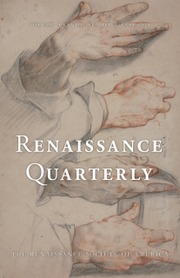Every so often, perhaps once or twice a decade, a book will be published that elicits from a field’s scholarly community a collective “thank goodness.” Andrew D. Turner’s edited volume, Códice Maya de México: Understanding the Oldest Surviving Book of the Americas, is such a publication. This short but impressive text succeeds in numerous ways, but most importantly, it manages to be an insightful, smart text that fills a scholarly lacuna in the field, while also modeling the ethical collaboration requisite for twenty-first-century scholarship. The book puts to rest, once and for all, the controversies that have haunted Códice Maya de México since academics first became aware in the 1960s of its miraculous survival. Turner has created an accessible text that informs readers of the codex’s place within the larger expanse of Maya history, its fraught positionality in the messy realities of modern looting, illicit trade, and repatriation, and, perhaps most importantly, the role it serves in contemporary Maya communities today.
To summarize Códice Maya de México’s modern biography is to relay something of a contemporary whodunnit tale. The ten-page, accordion-folded pictorial manuscript suddenly appeared in the hands of an antiquities dealer in 1964, acquired from individuals who had violently looted it from a dry cave located somewhere along the border of the Mexican states of Chiapas and Tabasco. Its so-called discovery served as a catalyst to ignite longstanding academic feuds within the Mayanist community, with one camp arguing for authenticity and the other that it was a fake, a modern painting made upon ancient bark paper. The fact that only three other precontact Maya codices survived the colonial period makes the existence of Códice Maya de México all the more remarkable, and partially explains some scholars’ incredulous responses.
Turner’s introduction informs readers of the text’s cultural and art historical contexts, arguing that it was produced in a transitory moment of Maya history. The codex’s materiality (more fully interrogated in chapter 2), its bark paper substructure and gesso ground, coupled with its stylized iconography, solidly center it in larger networks of Mesoamerican artistic production. Now known to be produced in the early postclassic period (900–1200), Códice Maya de México was an object created in “precarious and uncertain times as balances of power began to shift” (4), more specifically as political and religious authority moved from Petén in Guatemala northward to the Yucatán Peninsula and central Mexico. Turner cogently explicates the complex intellectual world of the manuscript, defined by sophisticated calendrical systems and astronomical knowledge, detailing how Códice Maya de México functioned as a 104-year almanac that recorded five cycles of Venus’s four distinct phases.
The second chapter, authored by Gerardo Gutiérrez and Baltazar Brito Guadarrama, definitively proves Códice Maya de México’s authenticity, finally laying to rest the accusations that have plagued its proper evaluation for nearly six decades. The authors conducted a battery of destructive and nondestructive tests (not all of which can be described here), which ultimately verified the text’s production in the early postclassic period between 1021 and 1152 CE, according to AMS 14C tests. Moreover, they were able to disprove previous assertions that claimed the presence of modern and synthetic pigments using X-ray florescence, and to verify the use of Maya Blue pigment, whose techniques of production were not known to the scientific community until after the reappearance of the Códice Maya de México. Additional historically verified materials were present, cochineal dye and calcium sulfate, solidly placing the manuscript within the broader artistic traditions of early postclassic Mesoamerica.
Jesús Guillermo Kantún Rivera finishes the book, articulating the profound importance of the Códice Maya de México and the other three surviving codices for contemporary Maya communities living in Mexico, Guatemala, and Belize. As a resident of Mérida, Yucatán, he describes his own self-discovery of his Indigenous ancestry, initially as a teenager reading American academic texts in translation. Kantún Rivera became a professional archaeologist and epigrapher, and today is a faculty member in the Department of Anthropological Sciences of the Autonomous University of Yucatán (UADY). He is part of a growing network of Indigenous scholars who together are working to “[recover] the historical and cultural heritage bequeathed to us by our ancestors” (66).
This edited volume will be cherished by Mayanists in all their subsidiary disciplines for its concise argumentation, beautiful facsimile foldout, and supplemental descriptive annotations. Its readability makes it perfect for undergraduate and graduate-level education alike.



